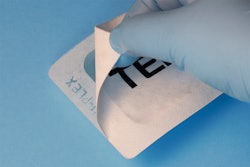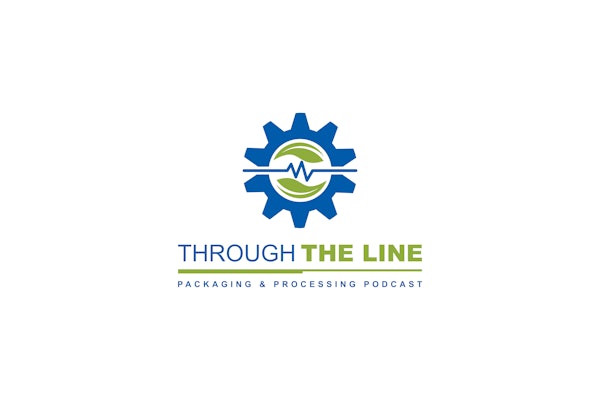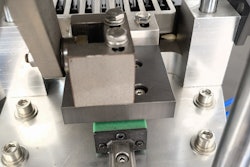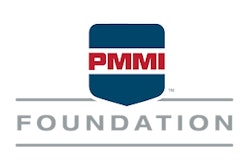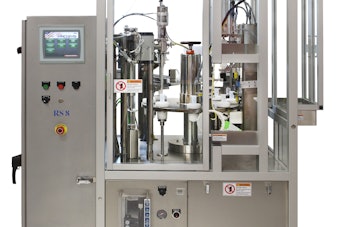
Reusable transport packaging is ideally suited to addressing pharmaceutical and healthcare industry challenges including IoT, solid waste reduction, ecommerce, and supply chain optimization, and these industries have been deploying reusable packaging for many years. Inbound to pharmaceutical manufacturing plants, reusable packaging products such as liquid IBCs and pallets are common. Within the plant, the use of reusable trays and containers also enhances production efficiency while outbound, reusable pallets, and health and beauty aid (HBA) totes are commonly used to distribute pharmaceutical products to retail.
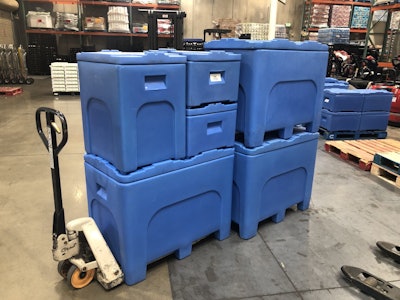 Photo Courtesy: Bonar Plastics
Photo Courtesy: Bonar Plastics
Cardinal already was using reusable plastic totes with replaceable molded expanded polystyrene (EPS) liners when it decided to switch from single-use water-based coolant gel-packs to a reusable phase change material. Water-based coolants are more prone to causing freeze damage initially and then inadequate cooling after they melt. The newly introduced reusable coolant packs provided more uniform cooling.
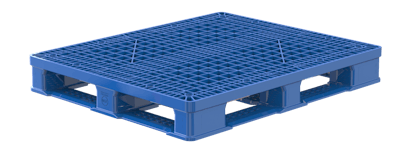 Photo Courtesy: Polymer Solutions International
Photo Courtesy: Polymer Solutions International
Pharma supply chain decision-makers are increasingly recognizing the importance of reusable packaging. The deployment of reusable transport packaging in the pharmaceutical/healthcare sector is on the rise, according to the recently released 2020 State of the Reusable Packaging Industry Report. In a survey conducted before the COVID-19 pandemic, 80% of respondents reported significant or slight increases in reusable packaging usage during the previous 12 months. All respondents anticipated increased demand over the next 12 months – 60% expecting a significant increase and 40% projecting a slight increase.
Overall, the global pharmaceutical packaging market size is projected to surpass $142 billion by 2027, exhibiting a CAGR of 6.0% during the forecast period. The driving force behind that growth is an ongoing demographic shift – the steady increase in the number of older people in the world.
Reusable packaging suppliers pivoting to address the COVID-19 pandemic
Aside from supplying reusable packaging to the pharmaceutical/healthcare sector, the unique situation of the COVID-19 pandemic saw several leading reusable packaging suppliers step forward to fill urgent customer needs. For example, one Reusable Packaging Association member developed two beds. One of them, designed for hospital usage, includes IV bag stand placement, swing-arm side rails, and multi-position back support. The other lightweight, stackable model is designed for use at shelter sites, for example.
 Photo Courtesy: TriEnda
Photo Courtesy: TriEnda
Four reasons why reusables are the best medicine
Several pharmaceutical supply chain packaging trends speak to the need for reusables. Let’s look at how reusable packaging can make a positive difference:
Driving industry IoT adoption: Globalization, increasing regulatory requirements, and delivery time pressures are pushing the pharma supply chain to become smarter, noted one author, writing in Packaging Europe, “Advanced tracking systems, built into packaging, is…an exciting innovation,” the article observed. “Smart packaging technologies such as this will soon become the new industry standard.” IoT sensors, affixed to reusable pallets and containers, dramatically reduce the cost of tracking on a per-use basis versus single-use packaging.
 Photo Courtesy: RM2
Photo Courtesy: RM2
Enabling e-commerce: The growth in ecommerce in the consumer products sector has been a primary driver for automated fulfillment. That trend is also being felt in the pharmaceutical supply chain. “The move is away from manual person-to-goods fulfillment to automated goods-to-person for pharma,” Modern Materials Handling reported. Automated fulfillment solutions benefit from the use of standardized reusable containers and pallets.
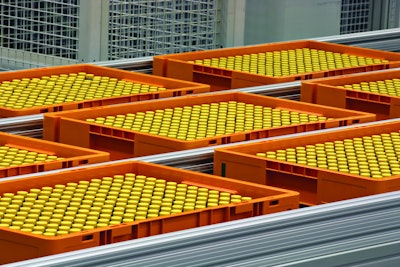 Photo Courtesy: Georg Utz
Photo Courtesy: Georg Utz
The pharmaceutical/healthcare sector faces pressures to achieve full visibility, eliminate waste, increase fulfillment speed and efficiency through automation, and improve overall supply chain optimization. As explored above, industry insiders expect reusable packaging to play an increasingly important role as the pharma supply chain transforms.
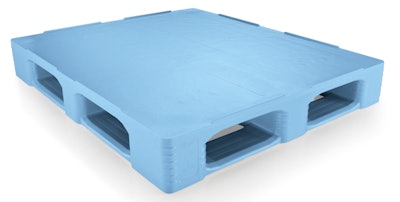 Photo Courtesy: Craemer
Photo Courtesy: Craemer Photo Courtesy: CABKA
Photo Courtesy: CABKA Photo Courtesy: FilmLoc
Photo Courtesy: FilmLoc Photo Courtesy: Craemer
Photo Courtesy: Craemer



